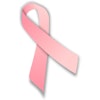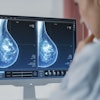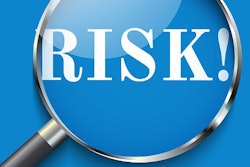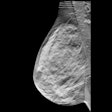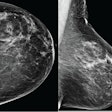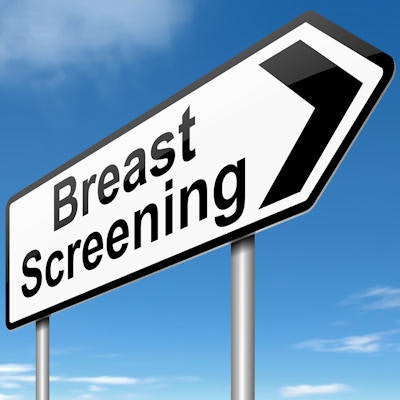
Women at increased risk of breast cancer are often advised to take preventive action, including additional screening. But the vast majority of women at high risk for breast cancer didn't take action to help mitigate their cancer risk, according to a case study published on March 27 in the Journal of the American College of Radiology.
Fewer than 10% of high-risk women underwent MRI screening, genetic testing, or an additional clinic appointment, the authors found. The findings suggest that important risk management information may not be reaching patients.
"At the six-month follow-up, 20 of the 66 respondents did not recall receiving a letter with their risk stratification status," wrote the authors, led by Claire Conley, PhD, a researcher from Moffitt Cancer Center in Tampa, FL. "Less than half correctly identified themselves as high risk."
Risk stratification is an established way to help ensure women with a higher risk of developing breast cancer have access to appropriate risk management resources, including adjunct MRI screening. However, research shows risk stratification is often underutilized.
Moffitt Cancer Center began using risk stratification for its breast screenings in 2017. Professionals at the center determined the risk of patients for breast cancer using answers on their intake forms. Patients were deemed to be at high risk for breast cancer if they had at least a 20% score on one of three risk assessment scales.
The Moffitt Cancer Center staff sent a letter informing women of their breast cancer risk status following a mammography screening. For high-risk patients, the letter includes a recommendation for additional MRI screening.
To study the effectiveness of this letter, the authors surveyed 66 women with a high breast cancer risk at a six-month follow-up appointment.
Almost one-third of the women didn't remember receiving the letter with their risk status results, and only 39% knew they were at a high breast cancer risk, the authors found.
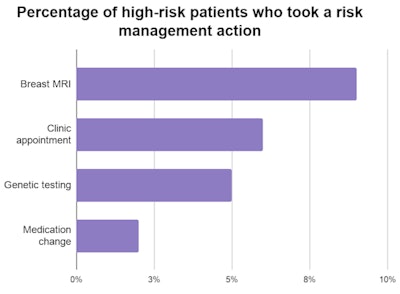
Only 10 women said they took action after learning of their high-risk status. Six women chose to undergo an additional MRI screening and four attended a high-risk clinic appointment, the two most popular actions.
Women who remembered their high-risk status were 2.4 times more likely to take action to manage their breast cancer risk than those who did not. However, the actions did not change these women's breast cancer status.
"Estimated lifetime breast cancer risk was not related to uptake of risk management strategies," the authors wrote.
The authors cautioned that most of the study participants were white, educated, and had private insurance, so the results may not apply to other populations. In addition, six months may not have been enough time to fully understand the risk management decisions of the patients.
"Future studies with longer follow-up are necessary to fully capture patients' use of risk management strategies," they wrote.
